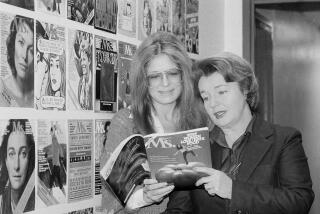NONFICTION : THE AMERICAN WOMAN 1987: A REPORT IN DEPTH, edited by Sara E. Rix (Norton: $18.95, hardcover; $7.95, paperback; 347 pp.).
- Share via
Compiled by the research arm of the bipartisan Congressional Caucus for Women’s Issues, “The American Woman 1987: A Report in Depth” provides current information about the status of women and women’s issues in the United States. As the first volume of a projected annual report series on 51% of this country’s citizenry, the initial edition offers a broad overview of how the lives of women have changed during this century, with special emphasis on women in the economy, in the family and in the political process. Helpful summarizing highlights preceding each chapter allow the reader to easily locate such astounding facts as: The median women’s income for full-time work is 68% of men’s; more than one-third of all employed women work in clerical jobs; recent voting studies demonstrate that women vote differently from men and that women outnumber men as voters, and, in the last 15 years, the number of families headed by women grew by 85%, and one-third of the women who raise their children alone are poor.
The primary chapters are complemented by 14 brief essays on specialized themes such as women of color, women in the military, media, business, religion and sports, as well as an in-depth statistical portrait that focuses on education, income, health, age, employment and marital status. Finally, a unique addition to the book is “Year in Review,” which lists the major legislative, judicial, social and economic events pertaining to women that occurred during 1986.
If there is any criticism to be made of this exceptionally useful resource report, it is that the editor and authors tried to do too much in the first volume. By targeting both policy makers and the public as their readership, the book’s direction became both too broad and too specialized. The main overviews were sufficient but too dry for the power of the information presented, especially for the uninitiated; and for those with expertise, the brief chapters were too encapsulated to capture the subtle complexities of the issues being discussed.
More to Read
Sign up for our Book Club newsletter
Get the latest news, events and more from the Los Angeles Times Book Club, and help us get L.A. reading and talking.
You may occasionally receive promotional content from the Los Angeles Times.






